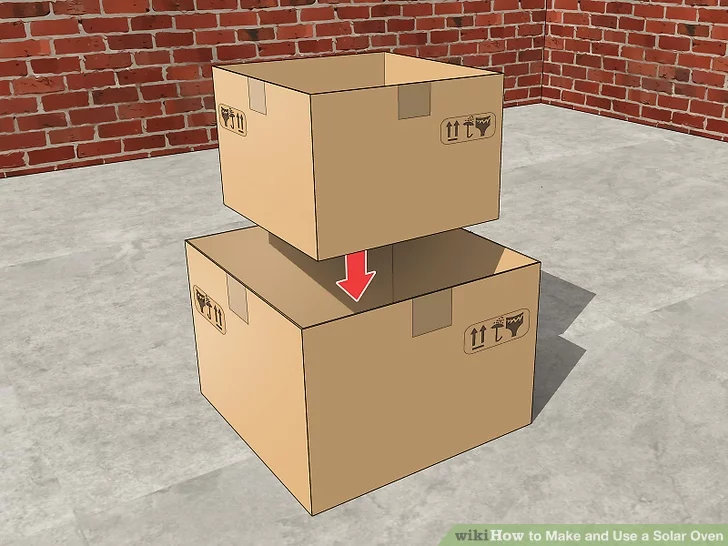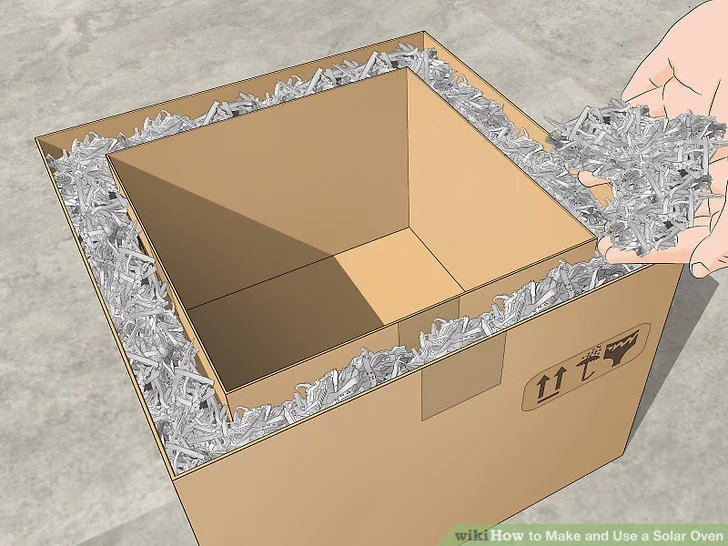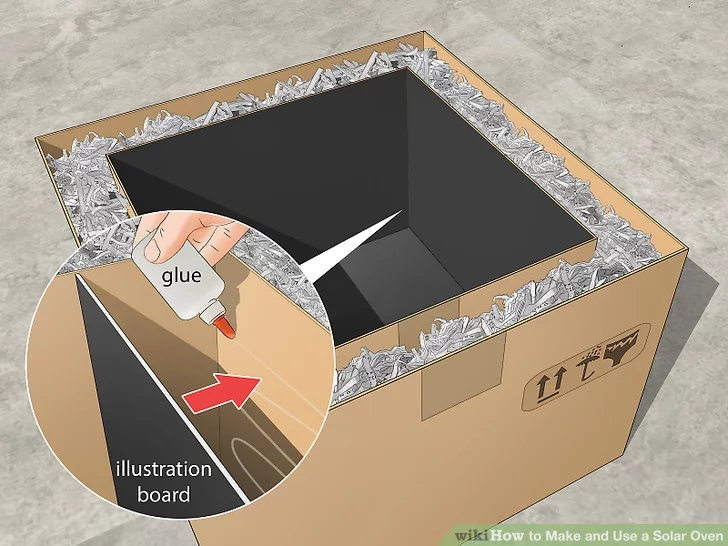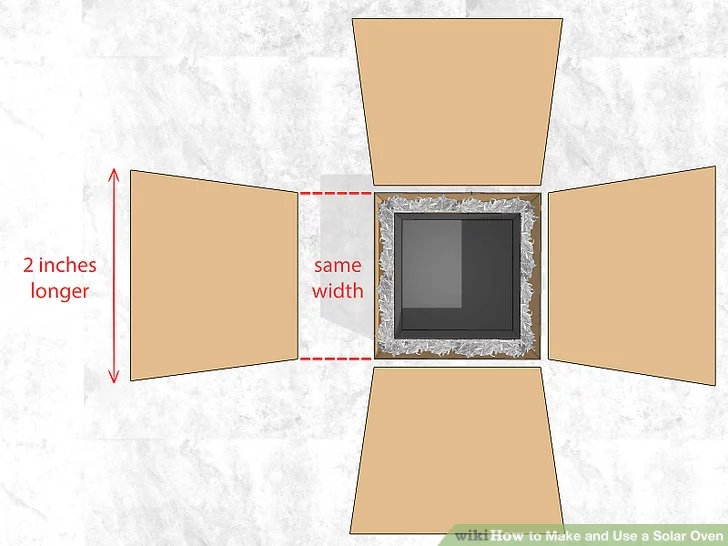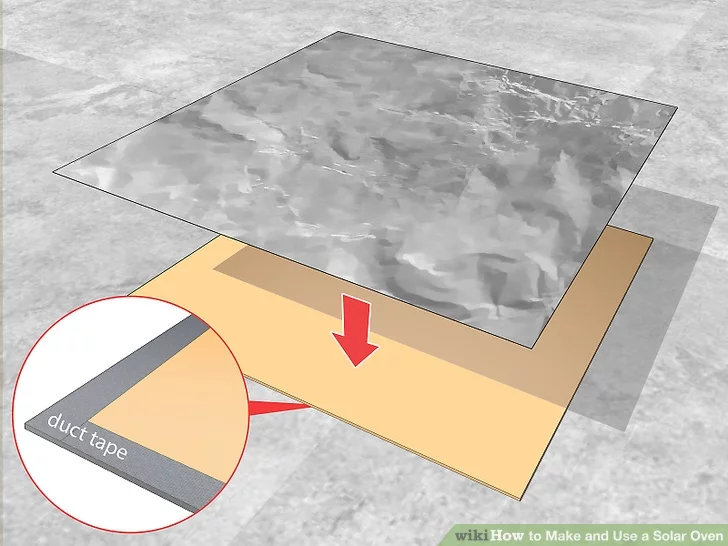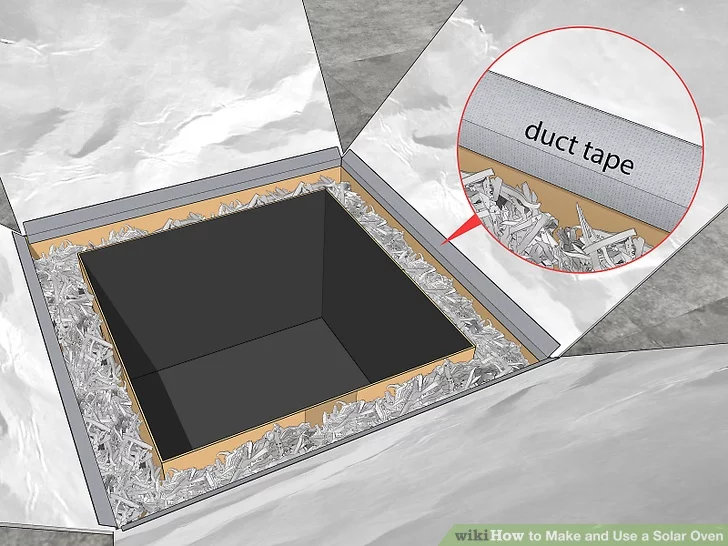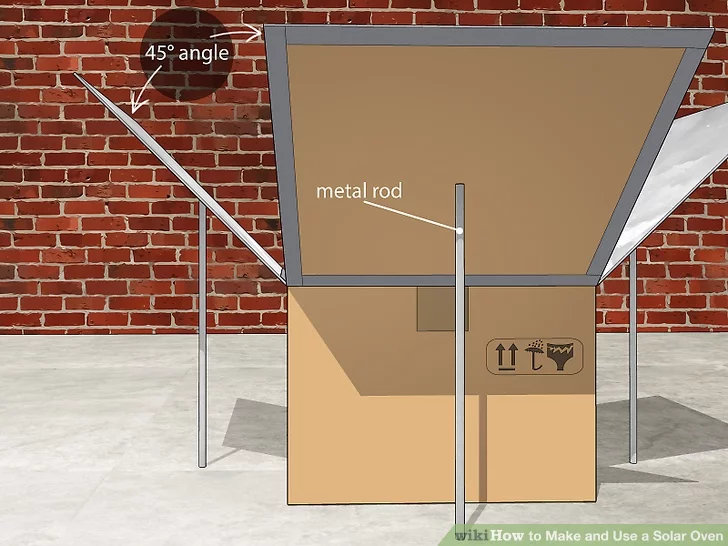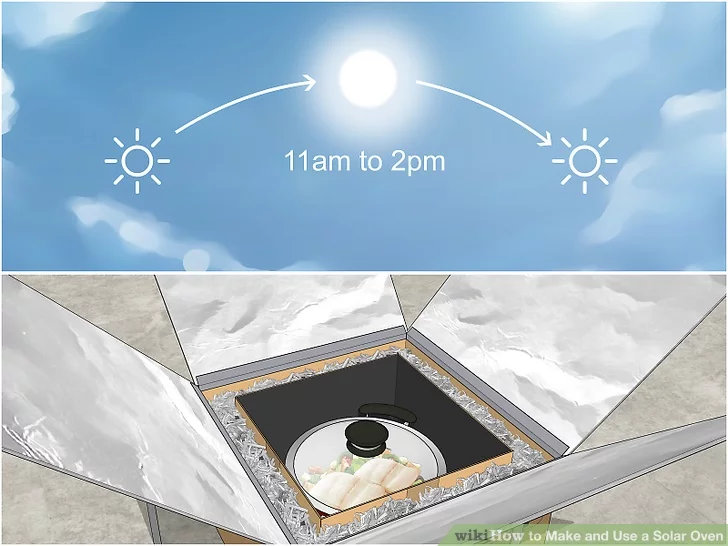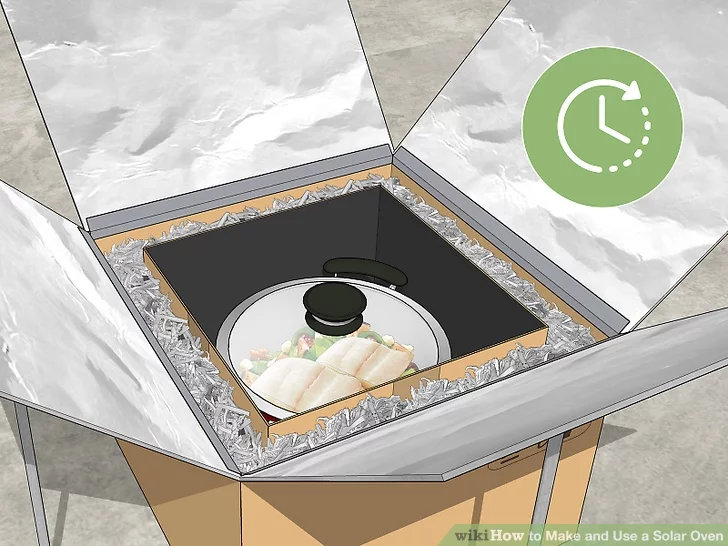People around the world are using solar ovens to reduce reliance on firewood and coal. Even if you have electricity, a solar oven can be an effective, energy-saving way to cook your food. You can make a lightweight solar oven out of a cardboard box, if you want a portable oven for camping or your backyard. If you want a really heavy-duty solar oven that will last a long time, you can make one from a metal drum.
1. Place a cardboard box inside a larger cardboard box.
Remove the tops of both boxes, and place the small one inside the larger one. Make sure there is at least a gap of 1 inch (2.5 cm) between the boxes. Glue the smaller cardboard box into place by squeezing glue onto the bottom and then pressing the smaller box firmly into the larger box.
2. Fill the gap between the boxes with shredded newspaper or torn fabric.
Tear the newspaper or fabric into strips, crumple them, and stuff them into the gap between the two boxes. Make sure to entirely fill the gap so there is no empty space. The paper or fabric will act as insulation, which keeps the heat trapped inside the oven.
3. Line the inside of the smaller box with black construction paper.
Cut pieces of black construction paper that are the dimensions of the walls and bottom of your cardboard box. Use glue to paste them in. Black absorbs heat very easily, so it will keep your oven toasty.
4. Cut trapezoids from cardboard.
The narrow side of the trapezoid should be the same width as one side of your large box. This is the side you will attach to the box. The wide edge of the trapezoid should be 2 inches (5.1 cm) wider than the small edge. Use a utility knife to cut the cardboard. Place your cardboard on a scratch-proof surface, like the garage floor to cut it. Always cut in the direction away from your body, to avoid accidentally cutting yourself.
5. Cover each square of cardboard with a reflective surface.
You can use aluminium foil, mylar, a mirror, a metallic auto-shade, or another reflective surface. This will reflect the sun’s rays into the solar oven and heat up your food. Tape the foil or other material securely to the cardboard using duct tape or cement glue. Now that the cardboard is covered in foil it can act as a reflector. If you're using aluminium foil, smooth it out so that it has as few wrinkles as possible.
6. Attach each reflector to each of the top edges of the big box.
Use duct tape to securely tape the each reflector to each side of the big outer box. Don’t worry that they flop over. You will prop them up.
7. Prop each reflector up at around a 45 degree angle.
You can buy thin, sturdy metal rods at a hardware store. Stick the rods into the ground underneath the reflectors. Prop the reflectors on the rods, and glue them into place. If you’re operating your solar oven on a windy day, take extra care that the rods don’t blow over by sticking them more deeply into the ground.
8. Position the oven in full sun, and put your pan of food inside.
For best results, use your solar oven between 11am and 2pm. That’s when the sun is at its most intense. You can use your solar oven any season of the year, as long as its sunny out. The sun moves throughout the day, so if you’re cooking something that’s going to take a few hours, make sure you don’t put the oven someplace that will be shady in an hour.
9. Wait a long time for your food to cook.
Don’t be surprised when your food takes way longer to cook than it would in a conventional electric oven. A solar oven is at a much lower temperature, so it will slow-cook your food, kind of like using a crock pot. You may need to reposition your box several times during cooking to catch the sun. Measure the internal temperature of your meat with a meat thermometer, which you can stick into whatever you’re cooking. Make sure meat gets up to at least 170 °F (77 °C), which is the temperature that kills germs.
Read more articles
- Log in to post comments


